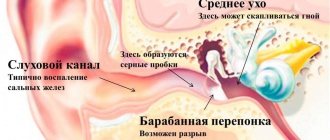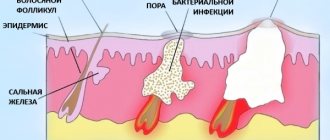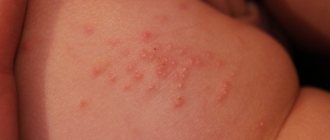Pancreatitis is an inflammatory process in the pancreas, which is responsible for producing the hormone insulin and digestive enzymes. The disease is considered dangerous and in some cases leads to death. Both adults and children can experience inflammation of the pancreas, but childhood pancreatitis has its own characteristics.
It has been noticed that children living in cities are more susceptible to the disease. Treatment of pancreatitis in children is prescribed depending on the form of the disease.
Please note that you can always benefit from treatment abroad. Better quality. More reliable and at affordable prices. Where can I find this service? Here: https://clinics.direct
Types of pancreatitis in children
Childhood pancreatitis can be acute, chronic, or reactive. Acute pancreatitis in children is relatively rare and is milder than in adults. As a rule, swelling of the gland is provoked by the development of an allergic reaction to medications or food. Childhood chronic pancreatitis is a very common disease. The main reason for its occurrence is poor diet and nutrition.
Pediatric chronic pancreatitis is characterized by the development of irreversible changes in the structure of the pancreas. During exacerbations, inflammation of the gland occurs, which causes pain to the child. Reactive pancreatitis is one of the most common types of pancreatitis in children. Its cause may be food poisoning, another inflammatory disease, or an acute respiratory viral infection.
Causes of pancreatitis in children
Due to the fact that a child’s body is more active compared to an adult’s body, its reaction to inflammatory or allergic processes is much more acute, and the pancreas is certainly affected. The main reasons for the development of pancreatitis in children include: improper diet, lack of a diet when there are regular long breaks between meals, abuse of unhealthy foods (chips, fast foods, sweet carbonated water, mayonnaise, smoked meats, etc.). This stimulates the active production of enzymes, which can cause the development of an acute form of the disease.
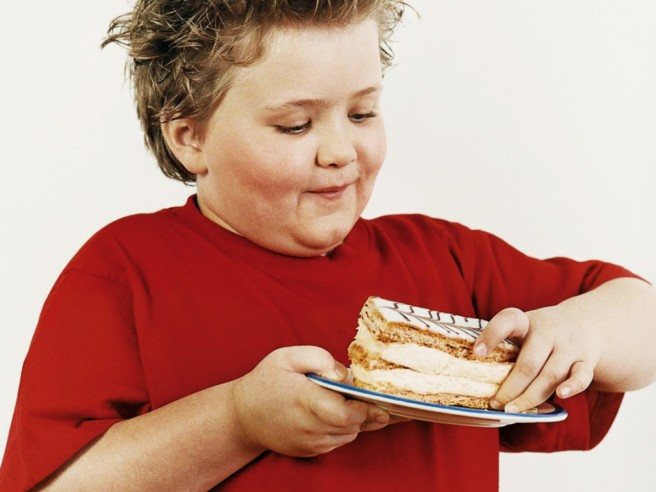
Also, the development of pancreatitis in children is facilitated by food poisoning, the use of a number of medications, which can provoke the development of reactive pancreatitis, abdominal injuries, the presence of congenital pathologies of the digestive system, identification of food allergies, lactase deficiency in infants, the presence of ascariasis - a violation of the outflow from the gland into the duodenum intestine, the cause of which is parasites (roundworm worms), excessive physical exertion, falls from a height leading to injuries to the back or abdominal area, the presence of various disorders in the functioning of the ducts of the pancreas, gall bladder, duodenum, diagnosis of mumps, cystic fibrosis, red lupus, flu, hypothyroidism.
Pancreatitis in children: causes, signs and treatment features
Pancreatitis in children occurs with the development of an inflammatory reaction in the tissues of the pancreas. In childhood, this pathology is often disguised as other diseases of the digestive tract (gastroduodenitis, gastritis, dysbacteriosis) and can occur for a long time with minor symptoms.
If signs of pancreatitis appear in children, you should contact a pediatrician or pediatric gastroenterologist. Without treatment, the disease becomes chronic and can cause complications, including pancreatic necrosis (a complication of acute pancreatitis with necrosis of pancreatic tissue) [1].
Reasons for the development of pancreatitis in a child
Pancreatitis in children develops under the influence of various external and internal unfavorable factors:
- poor nutrition, overeating, excess fatty, spicy and overly spicy foods in the diet;
- severe allergic reactions to medications, food, environmental factors;
- congenital or acquired anomalies of the digestive organs;
- damage to the abdominal wall;
- progression of other gastrointestinal diseases;
- benign and malignant neoplasms in the pancreas;
- helminthiases;
- endocrinological diseases;
- past viral diseases;
- hormonal disorders;
- uncontrolled use of medications.
Regardless of the reasons for the development of pancreatitis in children, the child needs qualified medical care and a comprehensive examination.
Based on diagnostic data, specialists identify factors that provoke an inflammatory reaction in the pancreas, select an effective treatment regimen, and carry out prophylaxis to prevent further relapses.
Symptoms of pancreatitis in children
The main symptoms of pancreatitis in children are:
- complaints of sharp pain in the upper abdomen, which often radiates to the lower back and ribs;
- nausea;
- flatulence;
- stool disorder;
- white coating on the tongue;
- progression of other gastrointestinal diseases;
- frequent vomiting [2].
Acute pancreatitis in children
The acute form of pancreatitis can develop as a result of an infectious lesion of the body against the background of damage to the pancreas. The disease often occurs after overeating and eating excessively fatty foods, as well as against the background of viral infections and helminth infections.
Acute inflammation of the gland is accompanied by a pronounced destructive-inflammatory process. The child must be hospitalized to avoid the development of complications and serious disorders in the digestive system [3]. Timely consultation with a doctor will help to avoid negative consequences, for example, the development of purulent peritonitis (infectious inflammation of the peritoneum).
Chronic pancreatitis in children
Signs of chronic inflammation of the pancreas in children are determined primarily by the form of the disease and the condition of other organs of the digestive tract. Typically, children are bothered by aching pain under the chest, which intensifies after eating fatty and spicy foods, physical and psycho-emotional fatigue.
Chronic pancreatitis in childhood most often develops against the background of unfavorable heredity. If parents and close relatives develop a similar disease, the risk of its development in the child increases significantly.
The chronic course of the inflammatory process can lead to irreversible changes in pancreatic tissue and dysfunction of the organ. If characteristic signs of exacerbation appear, such as abdominal pain, bitterness in the mouth, vomiting, frequent and loose stools, you should contact a specialist. Self-medication may increase the inflammatory response.
Reactive pancreatitis in children
Reactive pancreatitis develops in children against the background of other diseases of the gastrointestinal tract, toxic damage (for example, due to drug poisoning), or an allergic reaction. In the overwhelming majority, the cause of the inflammatory process lies in the exacerbation of cholelithiasis and liver diseases.
Reactive pancreatitis develops several hours after adverse effects of internal and external factors. The following symptoms are noted:
- pain that increases after eating;
- signs of gas formation;
- heartburn;
- nausea turning into vomiting;
- traces of bile and mucus in the vomit [4].
Diagnosis of pancreatitis in children
The diagnosis is made based on the clinical picture, the results of the survey, examination of the child and the data of the examination. When palpating the abdomen, the gastroenterologist detects local pain in the epigastric region (in the upper and middle parts of the abdomen, between the costal arches). In order to identify concomitant pathologies of the digestive organs, specialists may also prescribe:
- general radiography of the gastrointestinal tract;
- computed tomography;
- Ultrasound;
- MRI.
Treatment of pancreatitis in children
The choice of treatment methods for pancreatitis in children requires a careful study of the medical history, examination data and examination of the child. The acute form of the disease often requires hospitalization of the child. The inflamed pancreas needs rest, which can only be ensured by strict adherence to the following conditions:
- bed rest;
- diet;
- possible short-term therapeutic fasting;
- drug treatment, including the administration of glucose, painkillers and anti-inflammatory drugs, as well as drugs intended to normalize digestion, for example, the drug Creon®.
In case of severe destruction (impaired functioning) of the pancreas, urgent surgical treatment is required.
Due to the high risk of complications, pancreatitis in childhood requires specialist supervision. Even if the symptoms of the inflammatory process are mild, it is necessary to consult a specialist to prevent undesirable consequences.
Gastroenterologists pay special attention to the development of measures to prevent exacerbations of pancreatitis in children. Prevention includes maintaining a balanced diet appropriate for the child’s age, preventing toxic damage to the body as a result of infectious processes and the course of diseases of internal organs.
Diet for pancreatitis in children
With pancreatitis, the child must follow a diet.
Excluded
the following food and drinks:
With pancreatitis, the child must follow a diet.
The following foods and drinks are excluded:
- fresh bread and pastries;
- sparkling water;
- fatty dairy products;
- smoked meats, seasonings and spices;
- store-bought juices;
- fat meat;
- cabbage;
- lemons;
- credit;
- legumes;
- coffee [5].
Slimy porridges prepared with vegetable decoctions are useful. You can use meat broths made from poultry (skinless chicken), veal, rabbit, which are previously steamed or boiled. During an exacerbation, food should be pureed and free of lumps and rough pieces that can injure the mucous membrane of the digestive tract.
Use of enzyme preparations
With exacerbation of pancreatitis in children, the work of the pancreas is complicated, which complicates its participation in digestion. To provide support to the inflamed organ and the entire gastrointestinal tract, specialists prescribe enzyme preparations. They contain pancreatin, which accelerates the breakdown of carbohydrates, fats and proteins, facilitating their active absorption into the bloodstream.
The drug Creon® is a modern enzyme product containing pancreatin in the form of minimicrospheres, which are placed in a gelatin capsule. The capsule itself dissolves in the stomach, minimicrospheres are released from it, which are mixed with the gastric contents.
Each particle of minimicrospheres is covered with an acid-resistant shell, which allows them to leave the stomach in their original form and pass into the intestines along with food. When the pH in the intestines changes, the acid-resistant coating of the minimicrospheres dissolves, digestive enzymes are released and begin their work.
Mixing with the gastric contents, particles of the active substance enter the intestines and quickly exert a therapeutic effect.
The material was developed with the support of Abbott to increase patient awareness of health conditions. The information in the material does not replace the advice of a healthcare professional. Contact your doctor
RUCRE172288 from 06/06/2017
1. Belousov Yu.V. Diseases of the pancreas in children: pancreatitis or pancreatopathy? Health of Ukraine. 2004; 26:28-32
2. Serebrova S.Yu. Chronic pancreatitis: a modern approach to diagnosis and treatment. Russian Medical Journal. Diseases of the digestive system. 2008; 10
3. Danilov V.G., Kosarev V.A., Duryagin D.S. and others. Acute pancreatitis in children // Surgery. 1995. – No. 4.
4. Gudzenko Zh.P., Pancreatitis in children // M: “Medicine”, 1980.
5. Astashkin V.A. Pancreatitis in children.//Surgery. 1975. – No. 10.
The material was developed with the support of Abbott to improve patient health awareness. The information in the material does not replace the advice of a healthcare professional. Contact your doctor.
Source: https://zen.yandex.ru/media/id/5cc837e477255f00b335302d/pankreatit-u-detei-prichiny-priznaki-i-osobennosti-lecheniia-5cdc0e53864fdf00b371b09f
The main symptoms of pancreatitis in children
Symptoms of acute pancreatitis in infancy are mild. They become brighter as the child ages. The acute form of pancreatitis in children is manifested by increased body temperature, vomiting, nausea, the appearance of a white coating on the tongue, diarrhea (repeated), pain in the abdomen.
The main symptoms of chronic pancreatitis include: chronic diarrhea or constipation, vomiting, weight loss, nausea, loss of appetite, drowsiness, allergic rashes, and fatigue. Reactive pancreatitis is characterized by the presence of symptoms of acute pancreatitis.
Symptoms
Most often, the disease occurs in a mild form; severe inflammatory lesions of the pancreas are quite rare. In young children, the clinical manifestations of this pathological condition are mild.
Acute pancreatitis in older children debuts with sharp paroxysmal pain in the epigastric region, which can be girdling in nature and radiate to the right hypochondrium and back area. The disease is accompanied by the appearance of dyspeptic disorders, such as loss of appetite, nausea, bloating, diarrhea and vomiting. Quite often there is an increase in body temperature to subfebrile levels, pallor and subicteric skin, in rare cases - cyanosis and marbling of the skin of the face and extremities, increased dryness of the oral mucosa and a white coating on the tongue. When pancreatic necrosis or purulent pancreatitis occurs, febrile temperature, progressive intoxication, intestinal paresis and symptoms of peritoneal irritation are determined, and in rare cases, the development of a collaptoid state.
Diagnosis of pancreatitis
If symptoms appear that may indicate the presence of pancreatitis, you should consult a pediatrician and gastroenterologist. After the examination, the doctor makes a decision on prescribing the necessary diagnostic methods. To diagnose pancreatitis, the following may be prescribed: a general blood test, thanks to which it is possible to identify the inflammatory process in the body.
In this case, an increased number of leukocytes is noted. Then a biochemical blood test is performed, through which an increased level of enzymes in the blood is detected, indicating the occurrence of acute, chronic or reactive pancreatitis.
The presence of the disease is indicated by excess amounts of trypsin, lipase and amylase. And finally, a stool test is taken from the child for a coprogram, thanks to which it is possible to identify insufficiently digested food particles. This indicates that the pancreas is not producing enough enzymes.
If necessary, the doctor also conducts an ultrasound examination of the abdominal organs, as a result of which the presence of abnormalities in their functioning, structure, size is detected, and prescribes a urine test for the presence of amylase.

Diagnostics
In order to make a diagnosis, doctors collect the patient's medical history. If this data is not enough, then the patient is referred for laboratory and hardware tests.
Chief gastroenterologist of the Russian Federation: “PANCREATITIS does not go away?! A simple treatment method has already healed hundreds of patients at home! To cure the pancreas forever you need...” Read more »
First of all, a referral for a blood test is issued. With this disease, it will be seen that the blood contains a lot of leukocytes, as well as an accelerated ESR (erythrocyte sedimentation rate).
Also read: Types and classification of pancreatitis of the pancreas
If necessary, a biochemical blood test is performed. In it you can notice increased activity of enzymes, in particular amylase, lipase and trypsin.
Note that in urine you can also see the activity of some enzymes, namely diastase or amylase.
In acute cases, it is necessary to undergo a stool test; fat in the stool, nitrogen, and connective fibers will be noted.
To be completely sure, doctors send the child for an ultrasound examination. In severe cases of the disease, an MRI or CT scan of the abdominal cavity is performed.
Treatment of acute pancreatitis in children
To treat acute pancreatitis in a child, it is necessary to place the patient in a hospital. Treatment of this form of pancreatitis includes absolute fasting for the first 3 days and ensuring complete physical and psychological rest. You are allowed to drink only degassed mineral water (Essentuki 4 or Borjomi) in a warm form.
The liquid should be taken in small single doses and small sips. Thanks to this diet, it is possible to cope with the feeling of hunger and eliminate the appearance of pain. From 3-4 days, grated buckwheat porridge, steamed omelet and unsweetened warm tea are gradually introduced into the diet.
When treating acute pancreatitis, it is necessary to maintain a gentle temperature regime, when all food is taken slightly warm. On the 5-6th day you can give milk jelly, non-acidic pureed cottage cheese and dry white bread. After another 1 day, it is recommended to expand the menu by introducing pureed vegetarian soups and vegetable purees into the diet.
A little later they switch to eating lean boiled meat, which should be prepared in the form of puree. On about the 14th day of following the diet, you should try giving fruit jelly and baked apples. Fresh vegetables and fruits are allowed to be introduced into the menu very carefully, and the child’s condition must be carefully monitored.
Treatment of chronic pancreatitis in children
When identifying a sluggish chronic form of pancreatitis in children, an integrated approach to treating the disease is necessary. Treatment of the chronic form includes: diagnosis and rehabilitation therapy in a hospital; dispensary observation by the attending physician; a course of health therapy conducted in sanatoriums of the appropriate profile.
In the hospital, chronic pancreatitis in children is treated according to the following scheme: taking sedatives (valerian, bromine) to maintain a calm emotional background, prescribing antispasmodics and analgesics if nagging pain occurs, following a diet.
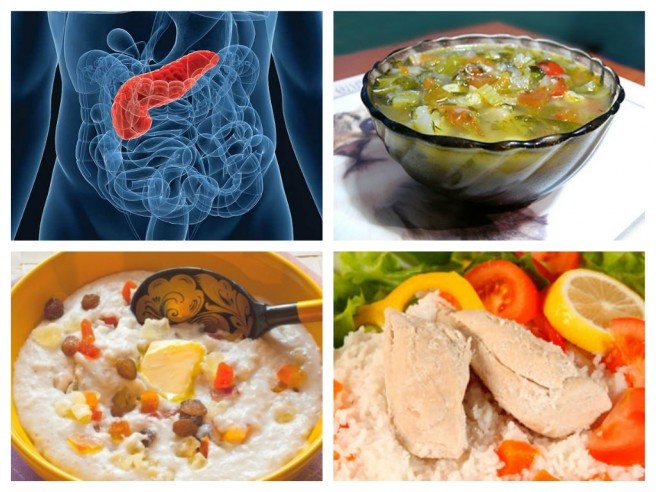
In the first two days after the child has been admitted to the hospital with a diagnosis of chronic pancreatitis, a period of fasting is carried out, during which only degassed mineral water is used (Borjomi, Essentuki 4). On the third day, weak unsweetened tea and white crackers, rosehip decoction, and ground mucous soup can be introduced into the diet.
After another day, the menu can be expanded with cottage cheese, milk and a small amount of butter. Starting from the 6th day, the child will be offered grated vegetables. A little later, boiled low-fat varieties of fish or meat are introduced into the diet.
After 2 weeks of following such a diet, you can try giving fruit and vegetable juices, which are diluted with a small amount of water. Fresh vegetables and fruits should be introduced into the diet little by little, and the child’s condition should be carefully monitored. The chronic form of pancreatitis in children is almost completely curable.
Forecast and prevention of childhood pancreatitis
If a child has been diagnosed with “chronic pancreatitis,” this means that he will be recommended to maintain a certain lifestyle (in particular nutrition - the purpose of dietary table No. 5 according to Pevzner) throughout his life. In children, the chronic form of pancreatitis is not common.
It is important not to break the diet, since the enzymes that are secreted by the pancreas depend on the food a person consumes. Any error in dietary nutrition can cause an exacerbation of the disease. Also, exacerbation of chronic pancreatitis can be triggered by viral diseases, nervous stress and tension, physical and emotional stress.
For mild forms of acute pancreatitis in children, the prognosis is favorable. If a hemorrhagic and purulent form, as well as pancreatic necrosis, is diagnosed, there is a high probability of death. The prognosis for the development of chronic childhood pancreatitis directly depends on the frequency of exacerbations.
Prevention of childhood pancreatitis includes a balanced diet, prevention of gastrointestinal diseases, systemic, infectious, helminthic diseases, and taking medications only if they have been prescribed by a doctor. In addition, preventing the occurrence of pancreatitis in a child is possible through careful adherence to the daily routine.

Causes
The occurrence of pancreatitis in children is associated with the pathological effect on the pancreas of its own activated enzymes, which have a damaging effect on its tissues, excretory ducts and vessels. The self-destruction of an organ is accompanied by the development of an inflammatory reaction in it, and the entry into the blood and lymph of enzymes and toxic products of the breakdown of its tissues leads to severe general intoxication.
In most cases, chronic inflammation occurs secondary and may be a consequence of previously suffered acute pancreatitis. The onset of the disease occurs under the influence of a variety of etiological agents of mechanical, neurohumoral and toxic-allergic etiology.
In most cases, the disease develops against the background of impaired outflow of pancreatic enzymes, caused by obstruction or abnormal development of the ducts of the pancreas, gallbladder and duodenum. Sometimes pancreatitis in a child is a complication of other diseases of the digestive system and malignant neoplasia localized in the abdominal cavity.
